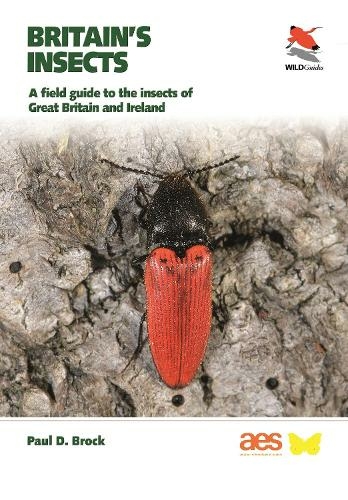
There are over a million species of insect in the world and over 25,000 in Britain and Ireland. How can one produce a useful field guide to those species? This, the latest in the WILDGuides series, is a masterful exercise in clarity, clear design and will get you to the right identification of the species you are looking at, or at least very close to it.
This book covers c1,700 of the 25,000 available species but they are representative of the rest and concentrates on the commoner species. You can’t expect any more, and for all but the most demanding of observers it will reliably get you to the point of knowing what the species is or at least knowing ‘it’s either this or something very similar’ which will probably do. If you need more, you’ll have to move on but you should be doffing your cap to Paul Brock for guiding you so far.
There are 607 pages here and the species accounts occupy 430 of them (with useful introductions, glossary, acknowledgements and index occupying most of the rest). This photographic guide has over 2,600 images which are of generally high quality.
I started by diving into the one of the 25 orders, the one I know a bit better than the others, the lepidoptera, and since I know nothing much about moths I looked at the butterfly pages – 27 pages for the 70+ regularly occurring species. I reckon if you arrived in the UK from a different country you could use these pages to get to the correct diagnosis of all of our butterflies – the most difficult thing would be getting a good enough view of the critters to be sure of what they are rather than any failings in the text, maps, information on food plants, flight periods etc or the images.
And those principles of lots of information being supplied in a standardised format with great clarity apply, it seems, to the other 24 orders too.
I realise that I haven’t seen an earwig for ages and now I know there are 7 British species but 3 of them are introduced and two of them are now probably extinct in the UK. What I remember seeing is likely to be the Common Earwig but the next time I see one I will check it out with this book in case it is one of the other species, but it seems to me that Common Earwigs aren’t quite as common as they used to be.
I don’t recall seeing a silverfish for a while either, and there are four of them – maybe I should keep this book in the bathroom for the next time one pops up? But I think it is likely to be kept downstairs, handy for rushing out into the garden for a quick attempt to identify a striking looking species of something or other.
When the great evolutionary biologist JBS Haldane was allegedly asked what his study of nature had told him about the mind of the Almighty he allegedly replied that it showed that the Creator had ‘an inordinate fondness for beetles’ and this book devotes 87 pages to the 4131 species that occur in the British Isles. Our mere 2,000 species of bugs get 91 pages.
This book is a great achievement and a very valuable edition to our libraries. I will use my copy a lot – as I have a lot to learn and I quite fancy learning it.
Britain’s Insects: a field guide to the insects of Great Britain and Ireland is published by Princeton University Press (on 8 June 2021).
[registration_form]
Like many naturalists my delving into the world of insects started with butterflies, then moths and dragonflies aided at the time by guides by Chinery, which I still have. however going further was always hard despite the plethora of books published and in my case bought. Books by Paul Brock are and were a revelation and aided a leap forward and this sounds like another must buy.